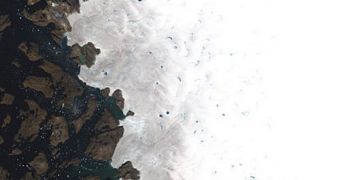When researchers first noticed that the world's oceans tended to warm up, they calculated the amount of time it would take for adjacent glaciers and ice sheets to melt down. Now, new studies are showing that the meltdown could occur a lot earlier than experts first calculated.
In addition to the warming itself, the ice sheets are also threatened by feedback loops that form in their specific environments. One such loop is caused by the fact that melted ice produces darker waters.
With waters around glaciers blacker than usual, more sunlight – and therefore heat – is attracted into these areas, which then cause even more ice to break, and further darken the waters. This self-sustaining cycle is very detrimental to seaside glaciers as well.
Warmer air also contributes to melting the ice. The results of the latest study on the issue shows that climate change models failed to account for all these factors properly, and that the estimates available thus far were extremely conservative.
The reality in the field is a lot bleaker, investigators at the University of Arizona now say. The new data need to be introduced in existing climate models, which are used to enforce global policies.
“Ocean warming is very important compared to atmospheric warming, because water has a much larger heat capacity than air,” explains Jianjun Yin, a UAT research scientist who was a part of the team.
“If you put an ice cube in a warm room, it will melt in several hours. But if you put an ice cube in a cup of warm water, it will disappear in just minutes,” the investigator adds.
Subsurface ocean warming was found to be the primary influencing factor that the 19 simulations the team studied failed to account for properly. Over the next century, average ocean levels could increase by as much as 1 meter (roughly 3 feet).
“No one has noticed this discrepancy before – that the subsurface oceans surrounding Greenland and Antarctica warm very differently,” Yin adds. Glaciers in the two areas will melt at different rates.
“The discrepancy is caused by different currents in the ocean: The Gulf Stream will send warmer waters toward Greenland, while the Antarctic Circumpolar Current blocks some of the warmer waters from reaching Antarctica,” Yin concludes, quoted by LiveScience.
Details of the investigation appear in the July 3 issue of the top scientific journal Nature Geoscience.

 14 DAY TRIAL //
14 DAY TRIAL //